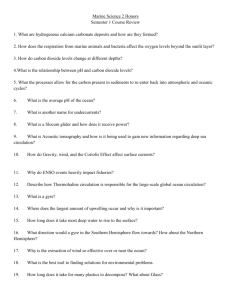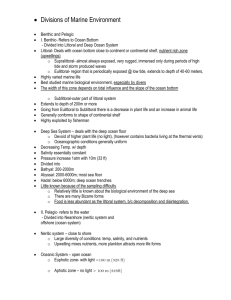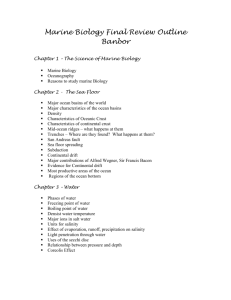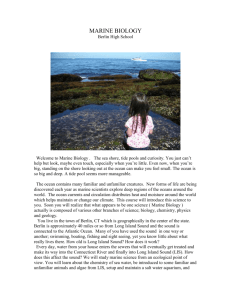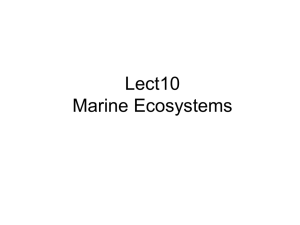Marine Biology Midterm Review Sheet
advertisement
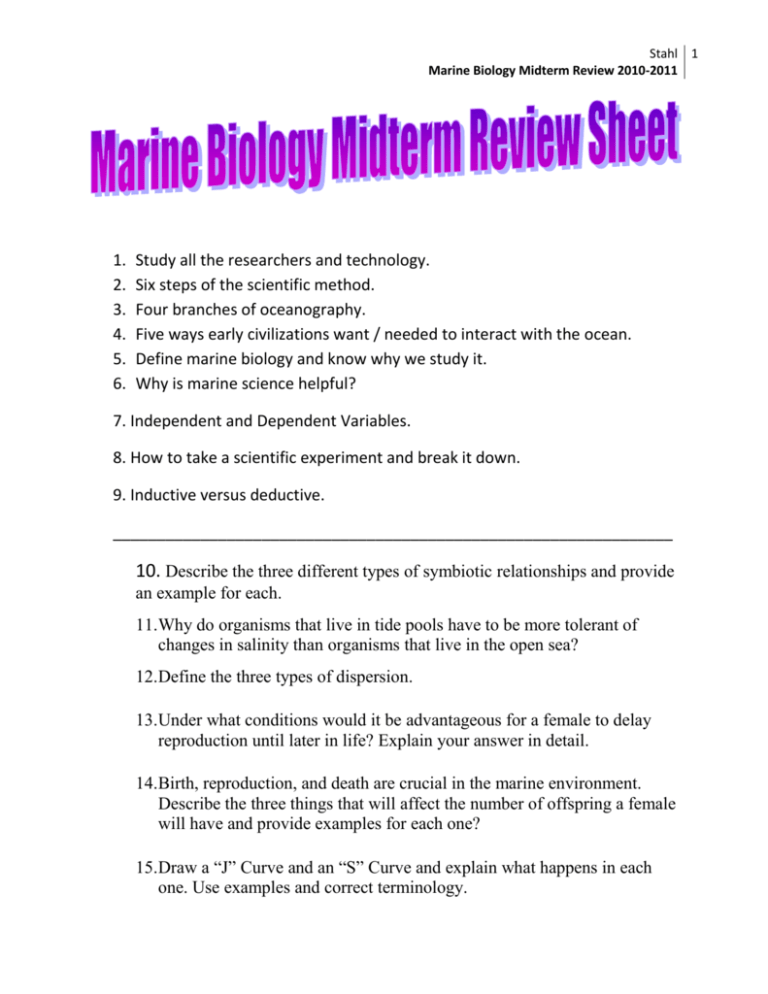
Stahl 1 Marine Biology Midterm Review 2010-2011 1. 2. 3. 4. 5. 6. Study all the researchers and technology. Six steps of the scientific method. Four branches of oceanography. Five ways early civilizations want / needed to interact with the ocean. Define marine biology and know why we study it. Why is marine science helpful? 7. Independent and Dependent Variables. 8. How to take a scientific experiment and break it down. 9. Inductive versus deductive. ________________________________________________________________ 10. Describe the three different types of symbiotic relationships and provide an example for each. 11.Why do organisms that live in tide pools have to be more tolerant of changes in salinity than organisms that live in the open sea? 12.Define the three types of dispersion. 13.Under what conditions would it be advantageous for a female to delay reproduction until later in life? Explain your answer in detail. 14.Birth, reproduction, and death are crucial in the marine environment. Describe the three things that will affect the number of offspring a female will have and provide examples for each one? 15.Draw a “J” Curve and an “S” Curve and explain what happens in each one. Use examples and correct terminology. Stahl 2 Marine Biology Midterm Review 2010-2011 16.Define a keystone species and explain how that organism benefits and acts as a keystone species. 17.Describe the major biotic and abiotic components of marine ecosystems and how they affect energy and trophic dynamics. 18.Using the definition of habitat and microhabitat, describe a marine habitat that you are familiar with and describe a microhabitat within that larger habitat. 19.Be able to describe a niche and the term used to subdivide niches. 20.Why do endotherms need to be well insulated from the external environment? 21.Know the difference between endotherms and ectotherms. 22.Review all food chain and food web terms such as herbivore, etc. 23.Describe the difference in temperature range between small bodies of water and open ocean areas. What adaptations do you expect to see in the animals living in either body of water? 24.Osmoconforming animals, such as the spider crab, that live in the open ocean show little ability to withstand large variations in salinity, while coastal animals, such as the closely related fiddler crab, show great ability to withstand large salinity changes. Explain why this is the case, considering the relevant abiotic features of both habitats. 25.Barnacles and mussels compete with each other for space on the rocky intertidal. What type of interaction exists between these two species? If you knew that mussels are capable of occupying all available space in the rocky intertidal then what would happen to the barnacles? What keeps mussels from crowding out barnacles throughout the entire intertidal zone? 26.Know how to label the ocean zones. 27. Understand the trophic levels and how much biomass is transferred from level to level. 28.Know what an estuary is. 29.Know what the most important marine photosynthetic organism is. 30.Know what happens when nutrients are limited and important inorganic nutrients. Stahl 3 Marine Biology Midterm Review 2010-2011 31.Know the stresses of living in the intertidal region. 32. Type 1, type 2, type 3 living. 33. Describe the process that recycles oceanic crust. 34. Roles of turbidity currents. 35. Explain seafloor spreading. 36.Five types of sediment and examples. 37.All of the ocean zones and locations, as well as all the features. 38.All of you plate boundaries and the directions in which they move. 39.How seamounts are formed. 40.Pangaea and the theory of continental drift. Make sure you know all of the pieces of evidence. 41.Continental crust versus oceanic crust. 42.Regions of the Earth’s interior. 43. Define subduction. 44.Gulf versus Sea. 45.Major ocean basins. 46.Where mid ocean ridges form. 47.Good luck and please study hard, hard, hard!!!!! The entire test is multiple choice!!!!

